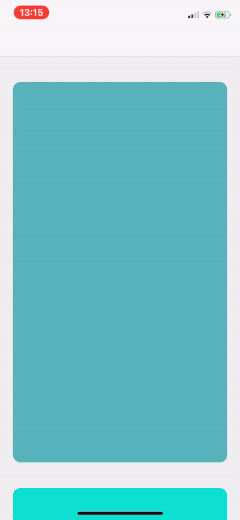- August 28, 2025
- Mins Read
A marriage between the Shazam Discover UI and Tinder, built with UICollectionView in Swift.
Project goal and information
The goal of this project is to recreate the Discover UI in Shazam (which I think is a great, fun way to display content) in combination with a Tinder style of swiping cards to the left/right. The idea behind this is that in some cases, you don’t want to swipe away cards, but keep them available for later on. This implementation allows for that. And it’s a fun way to interact with content.
It’s built with a UICollectionView and a custom flowLayout.
Requirements
- iOS 9.0+
- Swift 5
pod ‘VerticalCardSwiper’
To install with Carthage, simply add the following line to your Podfile:
github “JoniVR/VerticalCardSwiper”
Example
To try out VerticalCardSwiper
pod try VerticalCardSwiper
or open the project and run the Example.
Usage
VerticalCardSwiper behaves a lot like a standard UICollectionView. To use it inside your UIViewController:
import VerticalCardSwiper
class ExampleViewController: UIViewController, VerticalCardSwiperDatasource {
private var cardSwiper: VerticalCardSwiper!
override func viewDidLoad() {
super.viewDidLoad()
cardSwiper = VerticalCardSwiper(frame: self.view.bounds)
view.addSubview(cardSwiper)
cardSwiper.datasource = self
// register cardcell for storyboard use
cardSwiper.register(nib: UINib(nibName: “ExampleCell”, bundle: nil), forCellWithReuseIdentifier: “ExampleCell”)
}
func cardForItemAt(verticalCardSwiperView: VerticalCardSwiperView, cardForItemAt index: Int) -> CardCell {
if let cardCell = verticalCardSwiperView.dequeueReusableCell(withReuseIdentifier: “ExampleCell”, for: index) as? ExampleCardCell {
return cardCell
}
return CardCell()
}
func numberOfCards(verticalCardSwiperView: VerticalCardSwiperView) -> Int {
return 100
}
}
/// Indicates if side swiping on cards is enabled. Set to false if you don’t want side swiping. Default is `true`.
@IBInspectable public var isSideSwipingEnabled: Bool = true
/// Allows you to enable/disable the stacking effect. Default is `true` (enabled).
@IBInspectable public var isStackingEnabled: Bool = true
/// The transform animation that is shown on the top card when scrolling through the cards. Default is 0.05.
@IBInspectable public var firstItemTransform: CGFloat = 0.05
/// The inset (spacing) at the top for the cards. Default is 40.
@IBInspectable public var topInset: CGFloat = 40
/// The inset (spacing) at each side of the cards. Default is 20.
@IBInspectable public var sideInset: CGFloat = 20
/// Sets how much of the next card should be visible. Default is 50.
@IBInspectable public var visibleNextCardHeight: CGFloat = 50
/// Vertical spacing between the focussed card and the bottom (next) card. Default is 40.
@IBInspectable public var cardSpacing: CGFloat = 40
/// Allows you to set the view to Stack at the Top or at the Bottom. Default is true.
@IBInspectable public var isStackOnBottom: Bool = true
/// Sets how many cards of the stack are visible in the background
@IBInspectable public var stackedCardsCount: Int = 1
/**
Returns an array of indexes (as Int) that are currently visible in the `VerticalCardSwiperView`.
This includes cards that are stacked (behind the focussed card).
*/
public var indexesForVisibleCards: [Int]
Just like with a regular UICollectionView, you can reload the data by calling
cardSwiper.reloadData()
Get the current focussed card index
cardSwiper.focussedCardIndex
cardSwiper.scrollToCard(at: Int, animated: Bool) -> Bool
Get a card at a specified index
cardSwiper.cardForItem(at: Int) -> CardCell?
Swipe a card away programatically
cardSwiper.swipeCardAwayProgrammatically(at: Int, to: SwipeDirection, withDuration: TimeInterval = 0.3) -> Bool
Make sure to update your datasource first, otherwise an error will occur.
cardSwiper.moveCard(at: Int, to: Int)
cardSwiper.deleteCards(at: [Int])
cardSwiper.insertCards(at: [Int])
To handle swipe gestures, implement the VerticalCardSwiperDelegate.
class ViewController: UIViewController, VerticalCardSwiperDelegate {
override func viewDidLoad() {
super.viewDidLoad()
cardSwiper.delegate = self
}
func willSwipeCardAway(card: CardCell, index: Int, swipeDirection: SwipeDirection) {
// called right before the card animates off the screen (optional).
}
func didSwipeCardAway(card: CardCell, index: Int, swipeDirection: SwipeDirection) {
// handle swipe gestures (optional).
}
func didCancelSwipe(card: CardCell, index: Int) {
// Called when a card swipe is cancelled (when the threshold wasn’t reached)
}
func sizeForItem(verticalCardSwiperView: VerticalCardSwiperView, index: Int) -> CGSize {
// Allows you to return custom card sizes (optional).
return CGSize(width: verticalCardSwiperView.frame.width * 0.75, height: verticalCardSwiperView.frame.height * 0.75)
}
func didScroll(verticalCardSwiperView: VerticalCardSwiperView) {
// Tells the delegate when the user scrolls through the cards (optional).
}
func didEndScroll(verticalCardSwiperView: VerticalCardSwiperView) {
// Tells the delegate when scrolling through the cards came to an end (optional).
}
func didDragCard(card: CardCell, index: Int, swipeDirection: SwipeDirection) {
// Called when the user starts dragging a card to the side (optional).
}
func didTapCard(verticalCardSwiperView: VerticalCardSwiperView, index: Int) {
// Tells the delegate when the user taps a card (optional).
}
func didHoldCard(verticalCardSwiperView: VerticalCardSwiperView, index: Int, state: UIGestureRecognizer.State) {
// Tells the delegate when the user holds a card (optional).
}
}
Subclass the CardCell to customize the cards.
class ExampleCardCell: CardCell {
}
Key Features
- Shazam Discover UI with paging
- Tinder-style swiping
- Option to disable side swiping
- Set custom number of stacked cards
- Code documentation in README.md file
- Cocoapods support
- Carthage support
- SPM support
- Diff support
GitHub
- August 27, 2025
- SwiftUI
This package provides you with an easy way to show tooltips over any SwiftUI view, since Apple does not provide ...
- August 27, 2025
- SwiftUI
- Uncategorized
SimpleToast is a simple, lightweight, flexible and easy to use library to show toasts / popup notifications inside iOS or ...
- August 27, 2025
- SwiftUI
Create Toast Views with Minimal Effort in SwiftUI Using SSToastMessage. SSToastMessage enables you to effortlessly add toast notifications, alerts, and ...




